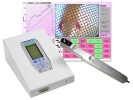Authors
S. Cobianchi, L. Casals-Diaz, J. Jaramillo, X. Navarro
Lab
Universitat Autònoma de Barcelona, Bellaterra, Spain.
Journal
Experimental Neurology.
Abstract
Activity treatments are useful strategies to increase axonal regeneration and functional recovery after nerve lesions. They are thought to benefit neuropathy by enhancing neurotrophic factor expression. Nevertheless the effects on sensory function are still unclear. Since neurotrophic factors also play a fundamental role in peripheral and central sensitization, we studied the effects of acute electrical stimulation and early treadmill exercise on nerve regeneration and on neuropathic pain, and the relation with the expression of neurotrophins. After sciatic nerve section and suture repair, rats were subjected to electrical stimulation (ES) for 4 h after injury, forced treadmill running (TR) for 5 days, or both treatments combined. Sciatic nerve section induced hyperalgesia in the medial area of the plantar skin in the injured paw. TR and ES differently but positively reduced adjacent neuropathic pain before and after sciatic reinnervation. ES enhanced motor and sensory reinnervation, and combination with TR induced strong agonistic effects in relieving pain. The differential effects of these activity treatments were related to changes in neurotrophic factor mRNA levels in sensory and motor neurons. ES speeded up expression of BDNF and GDNF in DRG, and of BDNF and NT3 in the ventral horn. TR reduced the levels of pro-nociceptive factors such as BDNF, NGF and GDNF in DRG. Combination of ES and TR induced intermediate levels suggesting an optimal balancing of treatment effects.
BIOSEB Instruments Used:
Electronic Von Frey 4 (BIO-EVF4),Electronic Von Frey 5 with embedded camera (BIO-EVF5)

 Pain - Thermal Allodynia / Hyperalgesia
Pain - Thermal Allodynia / Hyperalgesia Pain - Spontaneous Pain - Postural Deficit
Pain - Spontaneous Pain - Postural Deficit Pain - Mechanical Allodynia / Hyperalgesia
Pain - Mechanical Allodynia / Hyperalgesia Learning/Memory - Attention - Addiction
Learning/Memory - Attention - Addiction Physiology & Respiratory Research
Physiology & Respiratory Research
 Pain
Pain Central Nervous System (CNS)
Central Nervous System (CNS) Neurodegeneration
Neurodegeneration Sensory system
Sensory system Motor control
Motor control Mood Disorders
Mood Disorders Other disorders
Other disorders Muscular system
Muscular system Joints
Joints Metabolism
Metabolism Cross-disciplinary subjects
Cross-disciplinary subjects Happy new year 2025
Happy new year 2025 
